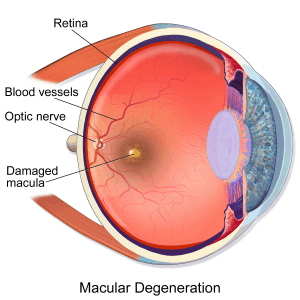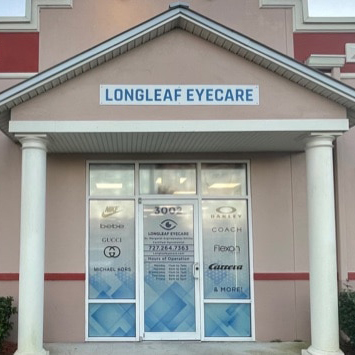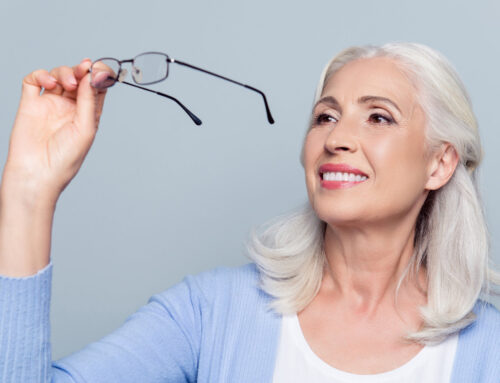Dry Eye
Age-related Macular Degeneration (AMD) is an eye disease causing clear vision to fail in millions of older people.
When electrical signals from the retina (the inner layer of the eye that captures light and turns it into an electrical signal) are received by the brain through the optic nerve, they are translated into images.
Many times in our lifetime, we will experience a “foreign body sensation” in our eye. That usually happens if the wind blows dust, an allergen or a foreign body into our eye or under an eyelid. This should not be dismissed as just an uncomfortable feeling. It needs to be remedied. It cannot be allowed to linger or fester.
For many, the feeling of grittiness, dryness, burning or stinging or even excessive tearing cannot be relieved simply, or with over the counter methods. It may be the sign of a chronic condition known as dry eye syndrome. Yes, even tearing eyes are a sign of dry eye.
The tears your eyes produce are necessary for overall eye health and clear vision. Dry eye means that your eyes do not produce enough tears or that you produce tears that do not have the proper chemical composition. Dry eye is more common as we age. It can also be caused by blinking or eyelid problems, medications like antihistamines, oral contraceptives and antidepressants, a dry climate, wind and dust, general health problems like arthritis or Sjogren’s syndrome and chemical or thermal burns to your eyes.

If you have dry eye, your symptoms may include irritated, scratchy, dry, uncomfortable or red eyes, a burning sensation, excessive tearing, blurred vision, or a feeling of something foreign in your eyes. Excessive dry eyes may damage eye tissue, scar your cornea (the front covering of your eyes) and impair vision and make contact lens wear difficult.
Any condition that reduces the production, alters the composition or impedes the distribution of the preocular tear film (POTF) may cause a noticeable irritation to the structures of the front surface of the eye and a degradation of vision. These conditions are often related to problems with the structure or function of the eyelids, cornea, or conjunctiva. Depending upon the severity of symptoms, individuals may be limited in their ability to see clearly and comfortably and may be at increased risk of developing a secondary infection or chronic inflammation that may not respond to treatment.
The two most commonly encountered ocular surface disorders are tear film disorders and blepharitis. Additional subclassifications include those dry-eye states associated with systemic connective tissue disorders, specifically Sjogren syndrome (SS). With regard to lipid deficient tear-film disorders, the involvement of meibomian gland dysfunction (MGD) has been proposed.
An estimated one-fifth of visits to eye care practitioners are related to ocular complaints secondary to dry eye, and as many as 25 percents of American adults may be affected by dry eye or have dry eye symptoms. These statistics indicate a significant need for access to professional care.
We perform specific tests to assist in differentiating the various forms of tear film abnormalities and identifying potential treatment strategies. Careful clinical observation, accurate diagnosis, and appropriate intervention can eliminate or minimize the deleterious effects of ocular surface disorders on the quality of life.
One of the easiest ways to screen for age-related macular degeneration (AMD) is to use an Amsler grid. An Amsler grid is a chart with lines and a dot at the center.
Your doctor can give you an Amsler grid to use at home. For dry AMD (age-related macular degeneration), check your vision in each eye every day or as often as your doctor advises. It only takes a few seconds.

What can you do if your diagnosed with Macular Degeneration?
Modify environmental risk factors that we know about. You should:
- Eat a low-fat, low cholesterol diet.
- Wear sunglasses with UV protection.
- Eat at least two servings of leafy dark green vegetables per day.
- Do not smoke and avoid exposure to secondhand smoke.
If you are post-menopausal, you should consult with your physician concerning estrogen replacement therapy. This may have a favorable impact upon cholesterol lipid levels that play a role in worsening the disease.
Develop healthy habits! If you smoke, QUIT SMOKING! Exercising, maintaining normal blood pressure, cholesterol levels and eating a healthy diet is a step in the right direction. Eat food and-or supplements rich in vitamin E,C and Lutein. Lutein is a plant antioxidant found in high quantities in spinach, kale and other dark green, leafy vegetables.
People who eat fish and green leafy vegetables may be at lower risk of AMD. There is no treatment for early dry AMD, although a special combination of supplements (zinc and antioxidant vitamins) may slow progression in some people with more advanced disease. Early intervention for wet AMD can delay progression.





